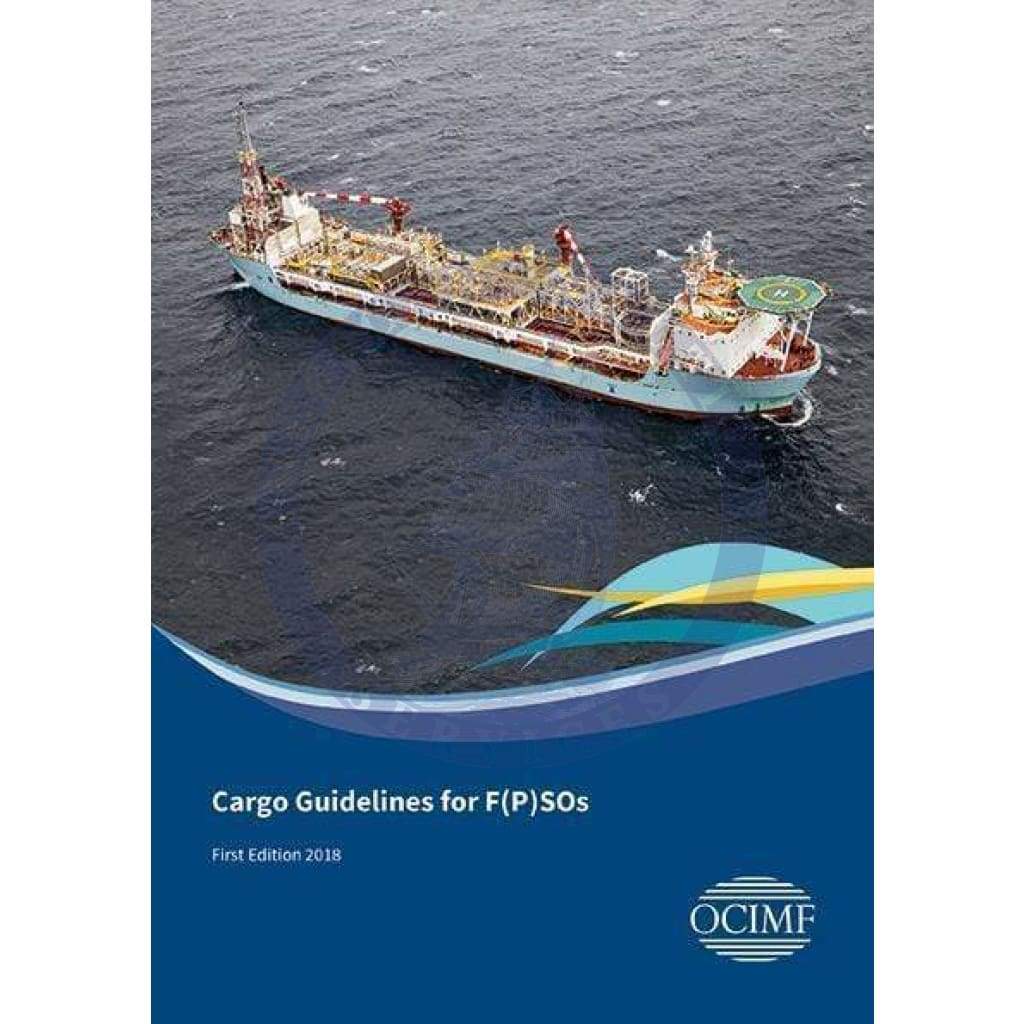Overview
This new publication offers guidelines for safe cargo handling and associated operations on board F(P)SOs. It supplements existing guidance in the International Safety Guide for Oil Tankers and Terminals (ISGOTT), by addressing activities and procedures that are either outside the scope of ISGOTT or are conducted differently on F(P)SOs, which often have multiple operations taking place at the same time. This publication will be essential for F(P)SO operators, as well as anyone involved in their design and management.
Content
Purpose and scope iii
Glossary vii
Abbreviations xi
Bibliography xiii
Section one
Safety management 1
-
-
Safety management system 2
-
Safe work systems 5
-
Personal Protective Equipment 5
Section two
Hazardous materials associated with F(P)SO operations 8
-
-
Hydrogen sulphide 10
-
Naturally Occurring Radioactive Materials 11
-
Mercury 13
-
Volatile Organic Compounds and BTEX 15
-
Methanol 16
-
Biocides 19
-
Bio-monitoring of personnel for toxic exposure 19
Section three
General hazards associated with F(P)SO operations 22
-
-
General principles 24
-
Control of potential ignition sources 24
-
Communications equipment 25
-
Use of tools 29
-
Lifting equipment 31
Section four
Storage tank atmosphere control and venting arrangements 34
-
-
Storage tank atmosphere control 36
-
Inert gas system 36
-
Hydrocarbon blanketing 46
-
Vapour recovery 48
-
Venting arrangements 50
-
Gas monitoring 55
-
Pyrophoric iron sulphide 56
Section five
F(P)SO cargo operations 58
-
-
General 60
-
Simultaneous Operations 61
-
Management of interfaces 61
-
Operability and maintainability 62
-
Safe design, stress and stability considerations 64
-
Cargo pumping arrangements 68
Cargo Guidelines for F(P)SOs
-
-
Pressure surge management 76
-
Tank coatings 76
-
Use of crude oil as fuel 81
Section six
Water management 82
-
-
General 84
-
Produced water 84
-
Tanks used for handling water 88
-
Chemical treatment 94
-
Drain systems 99
Section seven
Crude Oil Washing 102
-
-
General 104
-
Crude Oil Washing system maintenance 104
Section eight
Tank cleaning and gas freeing for entry 106
-
-
General 108
-
Water washing (open and closed loop) 108
-
Gas freeing 109
Section nine
Control of work in storage and ballast tanks 112
-
-
Preparation of tanks for entry 114
-
Tank entry procedures 114
-
Preparation of work site for hot work 125
-
Control of cold work and in-tank maintenance 128
-
Tank inspections 128
-
De-mucking of tanks 129
Appendix
Example of a SIMOPS decision making matrix 134
lang="en-US"
Introduction
Purpose and scope
This publication makes recommendations on the safety of cargo handling and associated operations on board Floating (Production) Storage and Offloading facilities (F(P)SOs). It supplements guidance in OCIMF’s International Safety Guide for Oil Tankers and Terminals (ISGOTT) by addressing activities and procedures that are either outside the scope of ISGOTT or are conducted differently on F(P)SOs. The guidance is for F(P)SO operators, but will also be of interest to anyone involved in the design and management of F(P)SOs.
Fundamental differences exist between the operation of an F(P)SO and a tanker. An F(P)SO may remain on station for several years and may be required to concurrently undertake oil and gas processing, loading, water management, discharging and in-tank maintenance activities. Existing industry guidance for conventional tankers, e.g. ISGOTT, is not always suitable for F(P)SOs because it does not address the safe management of these concurrent activities. The purpose of this publication is to provide guidance, recommendations and best practice on management. Full attention is given to the need for robust planning and work scope development, supported by appropriate risk analysis and Permit to Work (PTW) systems.
This publication also takes into account the operational issues associated with the potential presence of contaminants in oil and gas streams, which may include, for example, mercury and hydrogen sulphide (H2S). Sediments in storage tanks may include harmful substances such as oilfield scales and Naturally Occurring Radioactive Materials (NORMs), which can pose potential health risks to personnel.
Many storage tank maintenance activities on an F(P)SO have to be undertaken while the unit is on station and handling oil and gas production streams. This publication provides recommendations on the safe isolation of tanks from the active systems and procedures for safe tank entry. Specific guidance is provided for hot and cold work in tanks, tank inspections and safe practices for the routine removal of sediments from cargo spaces.
Where differences exist between the recommendations in this publication for activities undertaken on F(P)SOs, and those in ISGOTT for oil tankers, the procedures detailed in this publication should be followed by F(P)SO personnel, with the aim of achieving equivalent or higher levels of safety.
Although the recommendations in this publication primarily relate to F(P)SOs that have a conventional hull form, much of the guidance can be equally applicable to other designs, e.g. those based on a cylindrical hull, as there are no fundamental differences in cargo management procedures. Operators of such units are encouraged to review the relevance of the guidance on a case-by-case basis.Routine cargo transfer operations to offtake tankers are outside the scope of this publication and are addressed in OCIMF’s Guidelines for Offshore Tanker Operations.
It is recommended that personnel competence assessment activities follow the guidance in OCIMF’s Competence Assurance Guidelines for F(P)SOs.
Always refer to the current edition of any publication referenced in this book.
Details
Title: Cargo Guidelines for F(P)SOs
Subtitle: First Edition 2018
Number of Volumes: 1
Number of Pages: 140
Product Code: WS1633K
ISBN: ISBN 13: 978-1-85609-764-2 (9781856097642), ISBN 10: 1-85609-764-1 (1856097641)
Published Date: July 2018
Binding Format: Hardback
Weight: 1.00 kg
Author: Oil Companies International Marine Forum








